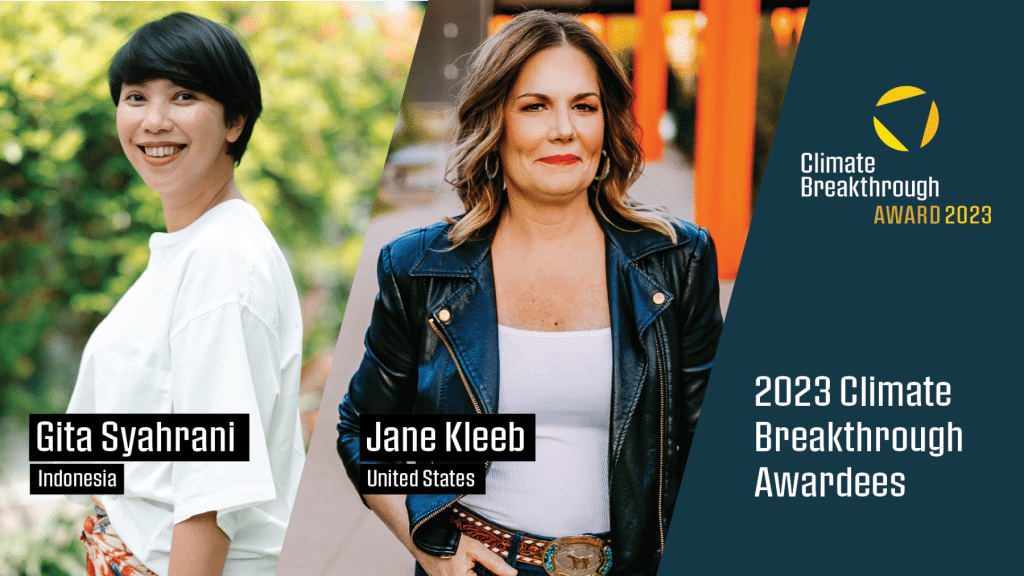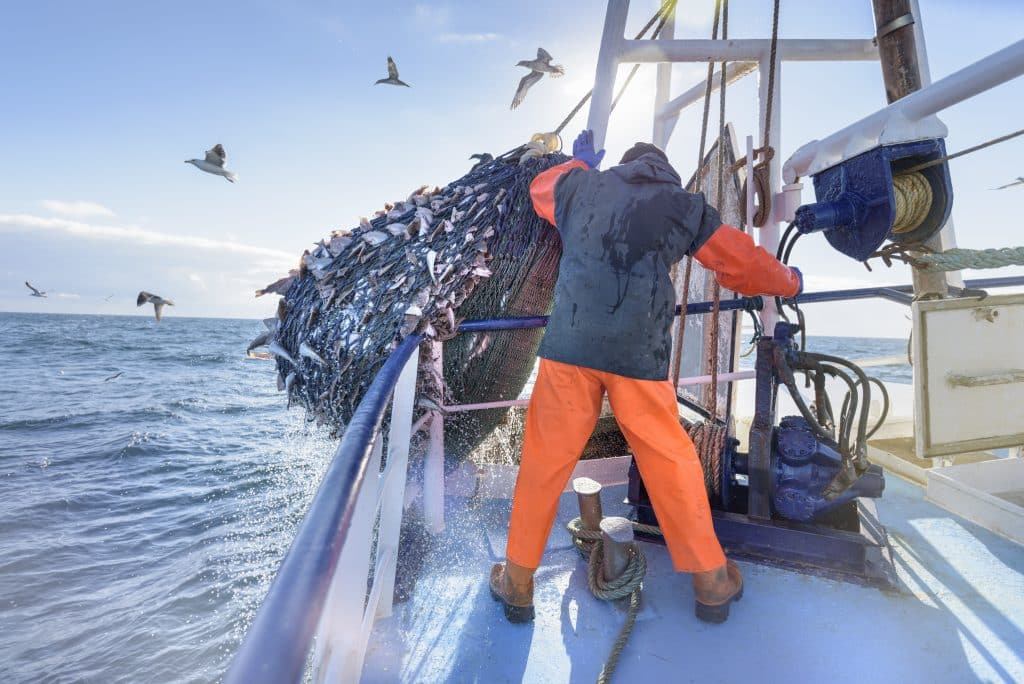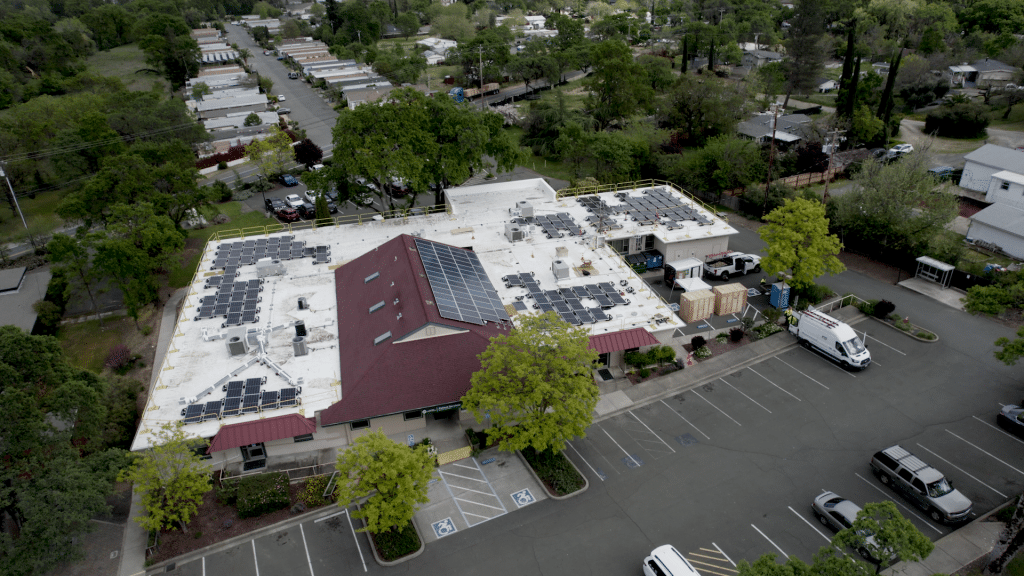Today, leaders of four major U.S. philanthropies announced a shared commitment to building more climate resilient communities and outlined a broader call to action for the nation’s large philanthropic sector. This commitment is the first of its kind by philanthropy, highlighting the need for an explicit focus on adaptation alongside mitigation, and putting communities—especially those disproportionately affected by the impacts of our changing climate—at the center. The announcement was made at the White House Summit on Building Climate Resilient Communities in conjunction with the release of the first-ever National Climate Resilience Framework by the Biden-Harris administration. It underscores the need for more collaboration across sectors—including government, business, higher education, and the nonprofit sector—to strengthen resilience in rural, Tribal and urban communities nationwide.
Climate change is increasingly impacting the lives of people, their livelihoods, industries, and natural resources across the nation, as evidenced by recent extreme weather events— record-shattering heat, chronic drought, wildfires, and devastating storms and flooding from coast to coast. To slow the worst impacts of climate change and climate-related disasters, emissions must be significantly reduced while giving communities the tools they need to prepare for the growing impacts of a changing climate. Philanthropy is increasingly supporting communities to do both—reduce emissions and build resilience to climate impacts.
The Biden-Harris administration’s Investing in America agenda and new National Climate Resilience Framework seek to advance federal support for communities and critical industries in tandem with private, nongovernmental efforts – including philanthropic and business commitments – and leadership by state, local, Tribal and territorial governments to build a more climate-resilient nation. Bolder, more holistic action by philanthropy recognizes the fact that the growing impacts of a changing climate threaten everything donors have worked for decades to contribute to American life and community wellbeing, from improving health, education, and economic opportunity to promoting vibrant cultural institutions, racial justice, scientific innovation and Indigenous expertise, fair and responsible use of new technologies, and conserving and protecting America’s precious natural resources and biodiversity, among other goals. Climate resilient communities are safer, healthier, more equitable, economically stronger, and sustainable in the face of a changing climate.
This philanthropic leadership initiative is being led by the Kresge Foundation, Gordon and Betty Moore Foundation, David and Lucile Packard Foundation, and Walton Family Foundation. These foundations have committed to the following four actions in the year ahead:
- Working with fellow donors, community organizations and other stakeholders to create a shared framework for climate resilience philanthropy that both complements and catalyzes public and private sector action. The funders–who represent varied grant making priorities across the country–will work together to map the wide range of resilience-enhancing grant making already happening, identify funding gaps, and create a set of principles to coordinate and amplify the impact that philanthropic investments have on community and natural resilience.
- Mobilizing new philanthropic commitments to address funding gaps and broaden the coalition working to strengthen climate resilience and adaptation, to include organizations that represent and engage those most vulnerable to or already impacted by climate change, especially low-income and Black, Latinx, Indigenous, rural and other communities facing racial and economic disparities and other inequities that are exacerbated by climate change. Donors emphasized this forward-looking goal for philanthropy alongside a number of immediate and ongoing investments to seed and scale up innovation and mobilize coalitions to better address threats ranging from extreme heat to wildfires, flooding, and more.
- Strengthening the knowledge base and accelerating learning across the field, so that better data, science, and community knowledge drive strategy, action, and related philanthropic investment over time. For instance, the future costs of inaction now are largely unaccounted for, though widely acknowledged to be very large.
- Strengthening communications, to make climate resilience and the way climate change is directly experienced easier to understand–and resilience more achievable. This includes promoting simpler, jargon-free language about what kinds of steps resilience may require, the benefits it delivers, and explaining the direct relationship between climate resilience, emissions reduction, and issues such as water and food security, reliable power in the face of extreme weather and disaster events, adaptive school and day care systems, public health, worker safety, and more.
Historically, philanthropy’s largest commitments on climate action have focused on mitigation, with important and growing progress, including emission reduction, advances in clean energy technologies, innovative natural resource management, and more meaningful and inclusive community engagement and public awareness building. Now, expanded and more coordinated philanthropic investment in climate resilience and adaptation is critical to securing a safe, vibrant future, and to protecting the value of climate mitigation investments themselves.
This commitment builds upon a range of resilience and adaptation approaches currently supported by philanthropy, including conservation of land, water and biodiversity; water supply access and quality; improved infrastructure and more affordable and accessible housing; job quality, worker safety and economic security; public health and health equity; disaster preparedness, response and recovery; and inclusive and more environmentally sustainable economic development. New philanthropic commitment also builds upon important efforts to bridge the gap between federal investments and communities, such as the equitable implementation of clean energy funding in the Inflation Reduction Act, and growing interest in federal programs, such as NOAA’s Climate Resilience Challenge Grant program and FEMA’s Community Disaster Resilience Zones program (both new), that focus on resilience.
“The administration’s new National Climate Resilience Framework provides an essential roadmap to help focus and align federal and non-federal action toward the shared vision of a safer, greener, more equitable, and vibrant nation. That vision requires an urgent focus on enabling communities to be more resilient in the face of increasingly severe fires, droughts and storms, with action well ahead of the disasters that devastate families and set back progress for years,” said Nancy Lindborg, President and CEO, the David and Lucile Packard Foundation.
“Philanthropy has a critical role to play in connecting communities with the external resources needed to prepare for and adapt to climate challenges – whether capital, technical assistance, leading-edge technologies, or inclusive economic networks. As supporters of more resilient communities, philanthropy has a moral obligation to recognize that reducing carbon emissions and adapting to the impacts of an already-changing climate is not an either/or proposition. We must invest more holistically in climate resilience strategies that are grounded in equity, to ensure that communities most affected can shape solutions and weather the impacts of a changing climate,” said Rip Rapson, President and CEO, the Kresge Foundation.
“Foundations can put nimble, risk-tolerant dollars to work on key social problems. We can help build, test, demonstrate, and accelerate solutions that will matter and endure long into the future. But philanthropy alone is not enough to overcome enormous threats such as the increasing incidence and severity of wildfires. The commercial sector can do its part. And a whole-of-government approach with immediate and sustained investment would improve early detection, tracking, and response to wildfire; mitigate community-level impact; and steward climate-smart landscapes at the scale that is needed over time to diminish the harm from wildfire,” said Harvey Fineberg, President, the Gordon and Betty Moore Foundation.
“We are eager to learn, alongside many others, what works and doesn’t as we adapt to climate impacts. No one has all the answers but what we do know is that it’s time to work together to find them. We have to find solutions to protect our water sources so fishers, farmers and all communities can be more resilient to climate change,” said Stephanie Cornell, Executive Director, Walton Family Foundation.
“Delivering on the promise of the administration’s Climate Resilience Framework will hinge on the philanthropic sector increasing investments to organizations with capacities to lead large-scale community engagement programs and proven leadership to ensure a clean energy economy will have equitable benefits to Black, Indigenous, Latinx, AAPI and immigrant communities. We have launched the Equitable Federal Implementation Fund with plans to swiftly deploy over $30 million in catalytic funding to community-based organizations. We call on our colleagues across the philanthropic sector to heed the urgency of investments in diverse community leadership. It’s essential to achieving the clean energy transition and climate resilience.” said Roger Kim, President of the Climate and Clean Energy Equity Fund, and the Climate Equity Action Fund.
“As communities across the U.S. and around the world experience the twin challenges of devastating floods and record-breaking droughts, it is clear that we should be talking about climate change in the present, not future tense. The most promising solutions for climate resilience are those that work for both people and nature. Now is the time for philanthropy to partner with government and business to resource, accelerate, and amplify these solutions,” said Allison Harvey Turner, CEO of the Water Foundation.
“The courageous combination of federal investments in climate programs alongside this national resilience framework demonstrates historic public commitments to avert the climate crisis already before us. Now, it’s time for philanthropy to step-up in unprecedented and brave ways, including substantially increasing endowment payouts. We need to empower grantees and other local partners to lead the way with trust, true-cost funding and multi-year general operating support. This means freeing them from philanthropic bureaucracy and discontinuing harmful practices like designing bespoke programs rather than building on what’s worked. Above all—we need to invest in Indigenous leadership and solutions,” said Bryna Lipper, CEO of the Humboldt Area Foundation (California).
“The impacts of climate change in places like the Colorado River Basin make it clear that a new direction is needed. Governments, Tribes, conservation groups, and water users must collaborate to build the resilience needed in all facets of river management so we can get beyond merely reacting to crisis after crisis and ensure go and people can thrive in the region for generations to come,” said Sam Tucker, director of the Colorado River Sustainability Campaign.
“Climate change affects us all, but it hits communities of color and low-wealth households the hardest. Addressing this disparity is crucial, as underserved communities lack the resources to combat climate impacts. The National Climate Resilience Framework, the Biden-Harris administration’s executive actions, and historic federal investments are paving the way toward a more just, equitable, and climate-resilient future. The Communities First Infrastructure Alliance is committed to advocating for climate-smart investments and supporting communities through the Communities First Fund to address this urgent challenge,” said Helen Chin, President of the Communities First Fund.
###
Note: Climate resilience refers to the enhanced capacity of human and natural systems to cope with and recover from the direct and indirect effects of climate change; adaptation refers to society-wide actions that must be taken given the growing climate risks and impacts. Effective and equitable adaptation helps produce greater resilience for communities, businesses and investors, public agencies, and others.










